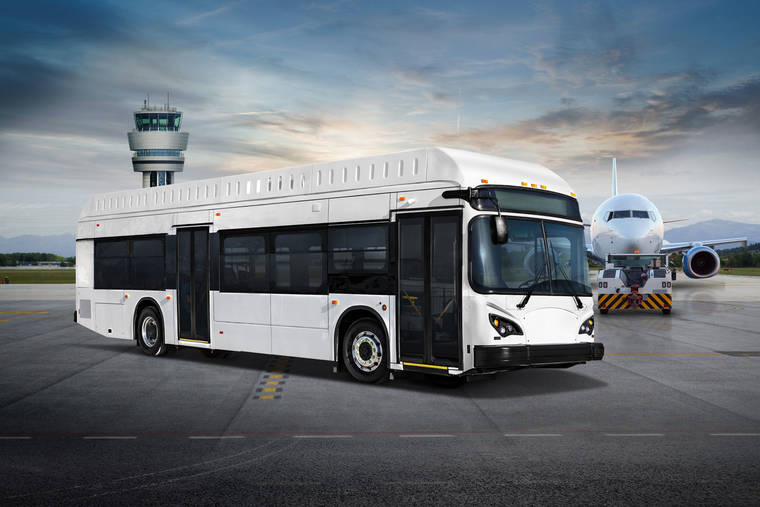Council mulls electric buses
Members of the Hawaii County Council met with a representative of an electric bus manufacturer Tuesday to discuss the possibility of converting the county’s bus fleet to electric vehicles.
At Tuesday’s meeting of the County Committee on Public Works and Mass Transit, council members listened to a presentation by Justin Scalzi, a sales manager at BYD Co Ltd, a Chinese company that is the largest manufacturer of electric vehicles in the world.
ADVERTISING
Councilman Tim Richards had requested the conversation in the hopes of restoring and revitalizing the county’s aging Hele-On bus fleet to fit with a bill signed last year promising to make the state carbon-neutral by 2045.
Scalzi touted assorted cost savings associated with battery-powered electric vehicles over diesel engines, calling electric buses “safer, reliable and more sustainable” than their conventional counterparts.
BYD promises that its 40-foot electric bus can operate for 10,000 charging cycles — about 27 years — before its battery is deteriorated to below 70 percent of its energy capacity, Scalzi said, which is more than double the average 12-year life span of a city bus.
Although the initial cost of an electric bus is higher than that of a conventional bus — about $700,000 compared to about $350,000 — they are cheaper and easier to repair and power, Scalzi said. Furthermore, the lack of carbon emissions from an electric bus is estimate to save the public $55,000 a year in health costs.
Scalzi added that the long-term savings of an electric bus are an improvement over the county’s current bus system, which is significantly depleted and currently relies heavily on daily chartered buses from Polynesian Adventure Tours, at significant cost.
Also in attendance at the meeting were Rob Kelly and Dave Siegal, representatives of AMPLY Power, a company that partners with BYD by providing charging infrastructure for public transit services.
Kelly said that charging infrastructure is typically the most expensive obstacle for cities looking to implement a fully electric public transportation system. However, Kelly proposed a system whereby AMPLY would install infrastructure at no cost to the county; rather, the infrastructure would be wholly owned and operated by AMPLY, which would charge the county a fixed per-kilowatt-hour rate to utilize it.
Kelly told the Tribune-Herald on Wednesday that the kilowatt-hour rate is determined by the costs of installing the charging infrastructure and has not been determined for Hawaii County. He added that the county could decide to pay for its own charging infrastructure, or subsidize some of its installation.
Kelly said AMPLY has had discussions with HELCO, and has determined that the county’s power grid could likely sustain at least 15 electric buses.
Council members appeared interested in the presentation.
Puna Councilwoman Ashley Kierkiewicz said the electric buses are a potentially more attractive option than other proposals to revitalize the county’s transit system.
“This fits into our goals,” said Puna Councilman Matt Kaneali‘i-Kleinfelder. “We could stick with diesel, but we’ll have to switch away from that eventually.”
Email Michael Brestovansky at mbrestovnansky@hawaiitribune-herald.com.


